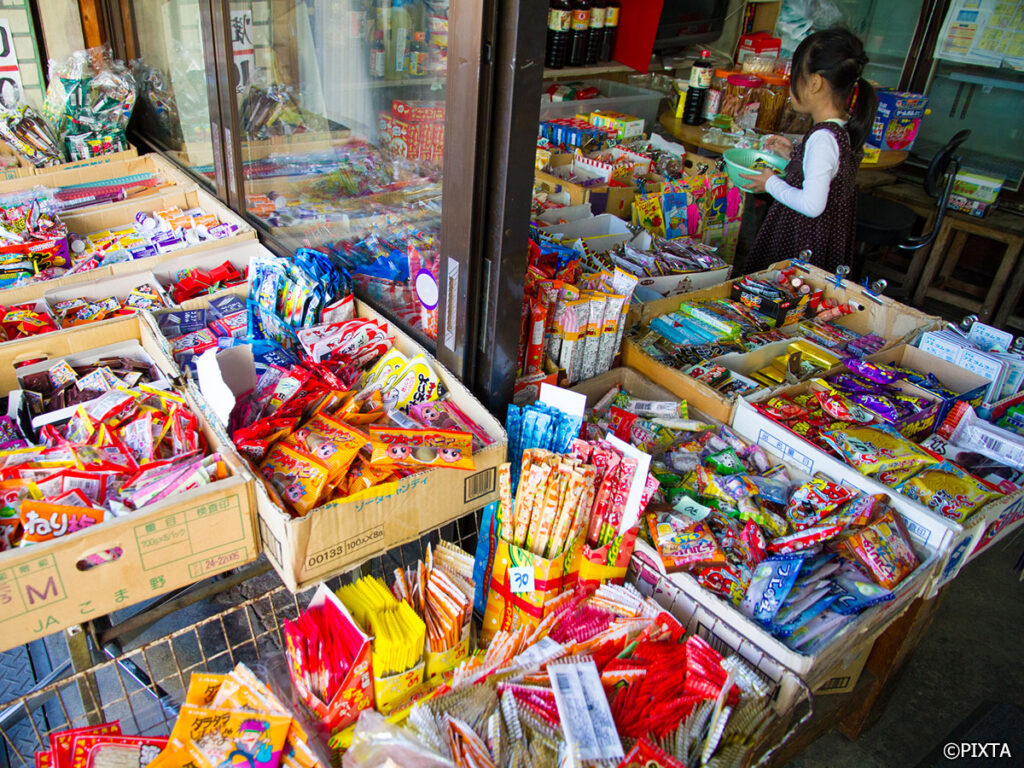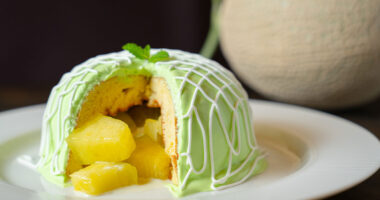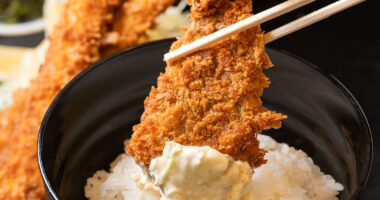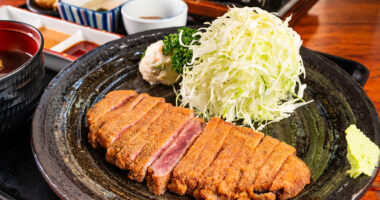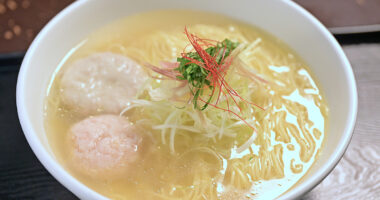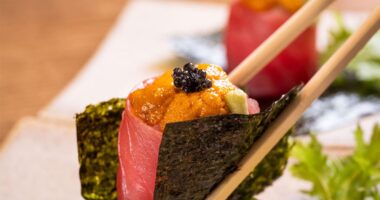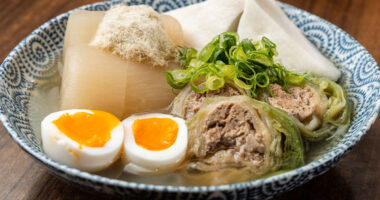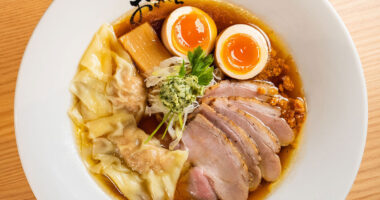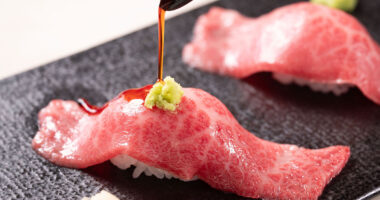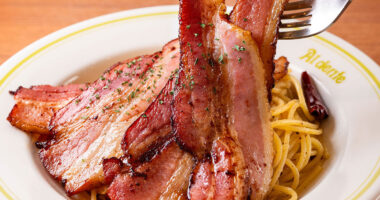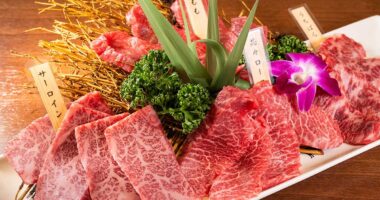In the realm of Japanese snacking, the role of 駄菓子 dagashi can’t be understated. These low-cost, fun-packed goodies serve not only as delicious treats but also as a nostalgic trip down memory lane. Imbued with elements of whimsy, dagashi is a true embodiment of joy and culture, making them an absolute must-try for first-time visitors to Japan. The following guide delves into the charming world of dagashi, offering insights into what they are, where you can find them, their different types, and some useful tips on how to enjoy them to the fullest. Whether you’re embarking on a snack exploration or seeking out unique souvenirs, you’re sure to find dagashi a delightful addition to your Japanese adventure.
What Is Dagashi?
Emanating the essence of “playful food,” dagashi is a category of affordable snacks designed to bring smiles to children’s faces. Dagashi are named after the Japanese words 駄 da, meaning futile or negligible, and 菓子 kashi, meaning sweets or snacks. The term “negligible” in the name emphasizes their low cost as a budget-friendly substitute for pricier treats. Over time, however, they became much more than just affordable snacks, evolving into a reflection of Japan’s socio-economic changes, cultural shifts, and childhood memories.
Stepping into the world of dagashi is akin to entering a treasure trove of vibrantly colored candies, uniquely shaped chocolates, tongue-tingling sour treats, and savory delights. Intriguing packaging, exciting flavors, and even surprise toys or collectibles add to the overall joy of the dagashi experience. While they may seem simple, these humble snacks indeed encapsulate the spirit of the times and remain etched in the hearts of many Japanese adults as fond reminders of their childhood.
Where To Get Dagashi
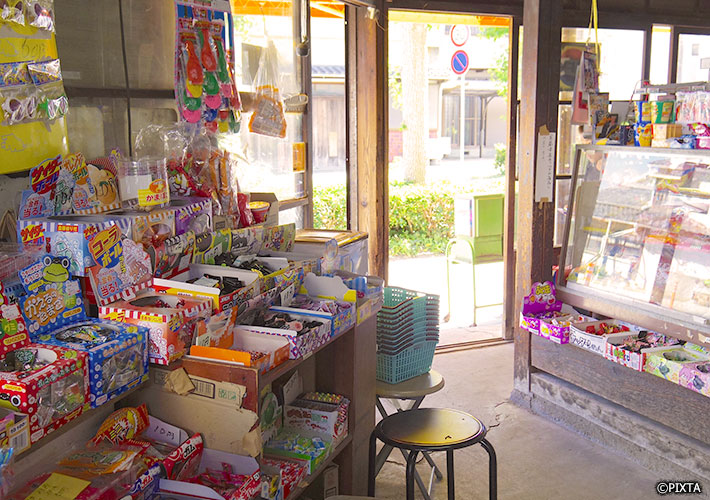
Dagashi shops like this one are typically found in more residential areas of the city.
A trip to Japan isn’t complete without a visit to a traditional 駄菓子屋 dagashiya. These neighborhood candy stores, often run by elderly shopkeepers, brim with an assortment of dagashi. Typically found in more residential areas, these shops offer an immersive experience into the past, transporting you to an era of post-war Japan where children would gather to exchange small coins for their favorite treats.
While traditional dagashiya are becoming less common due to modernization, there are still some around, especially in the old quarters of cities like Tokyo and Kyoto and even in the countryside. Other places to find dagashi, especially the more popular brands which are part of the larger category of snack foods, include supermarkets, convenience stores, and even some department stores. In recent years, online shops have also begun offering these nostalgic treats, making them available to global audiences.
Types of Dagashi
Given the extensive universe of dagashi, the following categories aim to represent their diverse spirit.
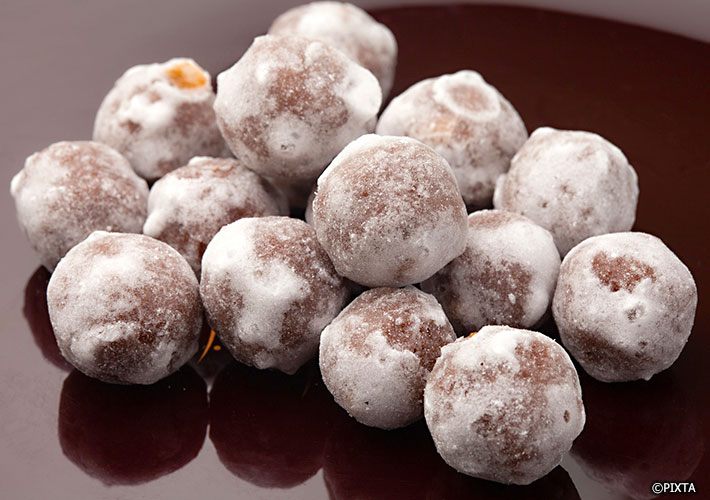
Ankodama are sweet treats with a core of red bean paste.
Nostalgic Favorites: This category encompasses things like きなこ棒 kinakobō, chewy caramel-like sticks made of roasted soy flour, syrup and starch, あんこ玉 ankodama, a sweet treat with a core of red bean paste, 麩菓子 fugashi, a sweet, puffed wheat snack coated in brown sugar, かりんとう karintō, a traditional snack deep-fried and covered in brown sugar glaze, as well as ソースせんべい sōsu senbei, thin sweet wafers, which can be seasoned with condiments, and 金平糖 konpeitō, colorful sugar candy that comes in small, crystal-like shapes. These snacks showcase the timeless appeal of dagashi, paying homage to their roots in Japanese confectionary history.
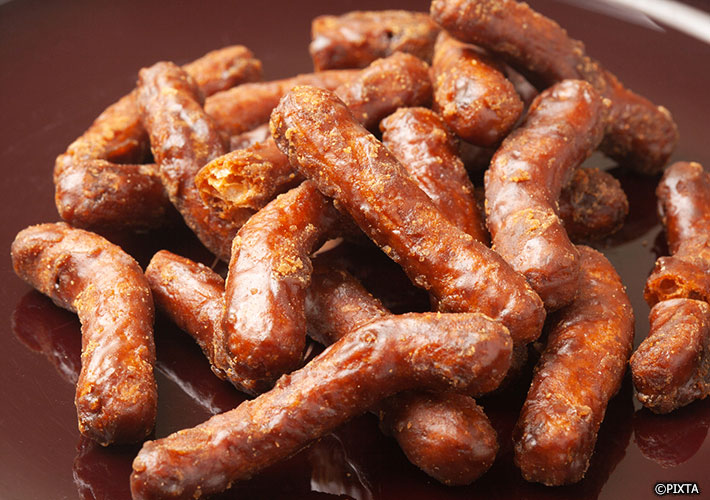
Sweet and crunchy karinto are a dagashi classic.
Snacks and Biscuits: In the category of snacks and biscuits, you’ll find numerous famous brands, many of which are available in convenience stores and supermarkets as well. Corn puffed snacks are particularly popular in this category. Some brands are shaped in balls and flavored with nori seaweed, others come individually wrapped in thick cylinders and with a variety of sweet and savory flavors. Snacks inspired by instant ramen and french fries also make appearances, as do various brands of biscuits and crackers, mostly with sweet flavor profiles.
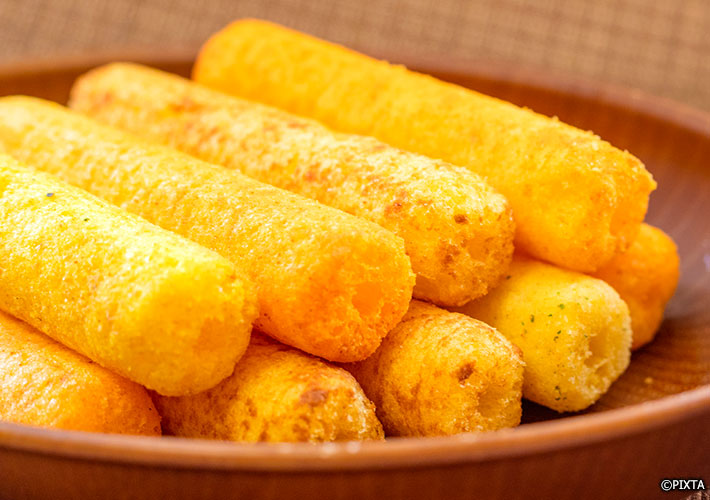
You’ll also find corn puffed dagashi like these at convenience stores throughout Japan.
Ramune and Tablet Candies: ラムネ ramune, which comes from the English word “lemonade,” was originally introduced in the late 19th century as a type of lemon-lime flavored soda served in Codd-neck glass bottles. However, beginning in the 1970s, it also inspired a type of candy which has the same name. The candy form of ramune comes in small pellets or losanges, wrapped individually in rolls or in packets and are also available in various fruit flavors. Some types even have a mildly effervescent effect. Reflecting its soda heritage, ramune is often packaged in plastic bottle-shaped containers. You can also find フエラムネ fueramune, a whistle candy made of ramune, as well as ramune-based “cigarettes” playfully presented in cigarette box-like paper packages. They usually come in classic ramune, as well as cocoa flavors.
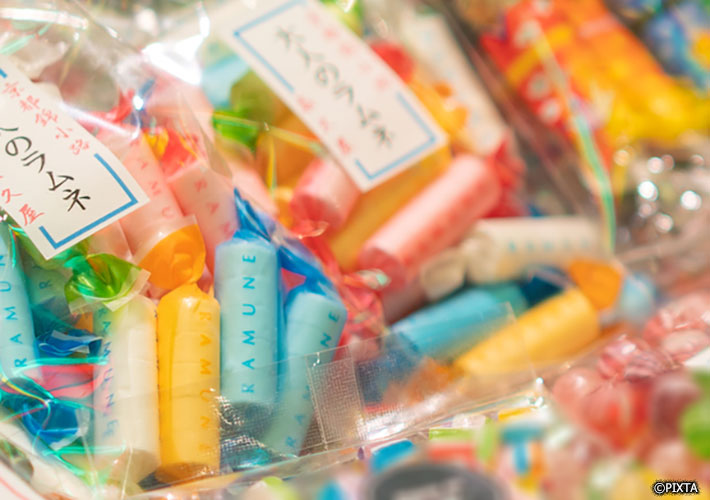
Colorful rolls of ramune candies at a dagashiya.
Gum: In many parts of the world, chewing gum and bubble gum are popular with children, and Japan is no exception. Dagashiya shops will usually carry several types, such as small marble-shaped gum in various fruit flavors, bubble gum balls, cola-flavored gum and stick-shaped gum. Some gum brands have collaborated with famous cartoon characters, and have games and quizzes in their wrappers.
Candies: In this broad category, you’ll find candies like the amber-colored べっこう飴 bekkō ame and 金太郎飴 kintarō-ame, a hard candy typically featuring the image of the iconic folk hero Kintaro, as well as ramune-flavored candy balls with fizzy centers. You’ll also find sweets like 餅飴 mochi ame, small chewy square-shaped candies made with mochi rice flour which come in flavors like cherry, green apple and ramune, 練り飴 neriame, a traditional sticky candy and even わたあめ wataame, cotton candy sold in individual packs. Milk caramels are also popular, some brands dating back to the Meiji Era.

Kintaroame are a classic hard candy with a cute design.
Chocolate: There’s no dearth of chocolate in a dagashiya shop. From long-sellers like むぎチョコ mugi choco, chocolate-coated puffed wheat kernels and chocolate snacks shaped in bars or pipes, to dark and milk chocolate squares individually wrapped and featuring an astonishing variety of flavors, chocolate dagashi abound. Equally popular are colorful candy-coated chocolate tablets which typically come in flat packets.

Chocolate dagashi often come in packets like these.
Savory Snacks: Snacks made from meat and seafood also feature prominently in a dagashi shop. Several popular brands come in sheets, strips or squares with flavors like wasabi, pickled plum and grilled eel, while others are coated in breading and emulate tonkatsu breaded pork. Inside, they’re made with either processed fish or squid. If you enjoy sour flavors, some of these fishy treats emulate 酢だこ sudako, octopus marinated in vinegar. If you don’t like seafood, try 酢昆布 sukombu, soft strips of kombu seaweed dusted with a sour powder. You’ll also find small salami sticks called カルパス karupasu, a name borrowed from колбаса kolbasa, which is Russian for “sausage.”

If you like sour flavors, you should try sukombu.
Tips for Enjoying Dagashi
Start your dagashi journey by visiting a traditional dagashiya. These old-fashioned neighborhood candy stores often possess a charm that transports you back to a simpler time. While it’s becoming a rarity, some shops provide a unique opportunity to savor もんじゃ焼き monjayaki, a type of pan-fried batter with ingredients like cabbage, meat and seafood. Depending on the shop, you might even have the chance to cook it yourself. Also, a handful of these shops house retro arcade games, adding another layer of nostalgic charm. Be sure to bring cash if you visit one, since these mom-and-pop shops often don’t take credit cards.
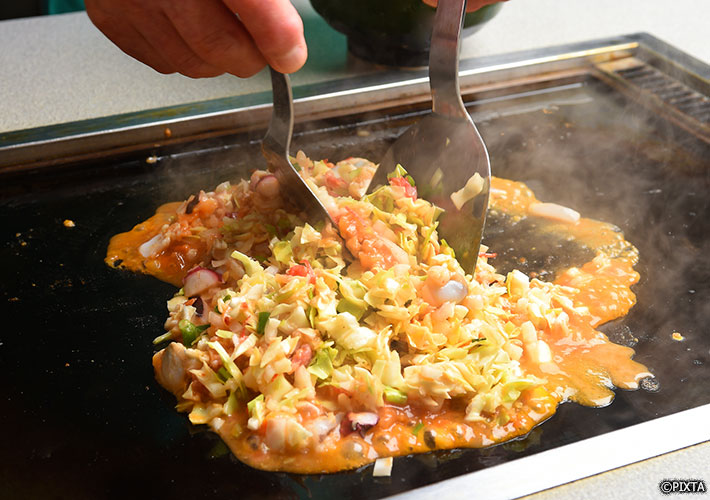
Some dagashiya also have grills for making monjayaki.
Dagashi make for unique and lightweight souvenirs. These small treats encapsulate a piece of Japanese culture, making them perfect gifts. If a trip to Japan isn’t in your near future, fear not! Many online retailers bring dagashi to your doorstep, allowing you to enjoy these timeless treats from anywhere in the world.
In conclusion, exploring the world of dagashi treats in Japan is a delightful cultural experience for international visitors. Traditional dagashiya stores offer a unique glimpse into Japanese snacking culture, filled with a wide range of affordable and whimsical treats. From nostalgic favorites to snacks, candies, chocolate, and savory delights, there’s something to delight every palate. So don’t miss the opportunity to indulge in the world of dagashi and create delightful memories of your time in Japan.
